Perlite is uniquely suited to hydroponic crop production the world over.
With the rapid development of hydroponic crop production, perlite is proving its superiority as a commercial growing medium in one of the world’s most advanced growing technologies.
Better Yields & Higher Crop Values
Extensive testing over a period of years has documented the value of perlite for high value crop production. Tomato crops grown in perlite have resulted in higher yields than those grown in rockwool. Other crops include cucumbers, peppers, eggplants, figs, herbs, micro-greens, roses, gerberas, and amaryllis to name only a few. Medicinal crops subject to stringent health standards benefit from perlite’s sterility. Even crops such as strawberries, grapes, mangoes, and grapefruit grown in desert conditions have benefited from added nutrient availability and faster maturity when grown in fertigation sleeves filled with perlite.
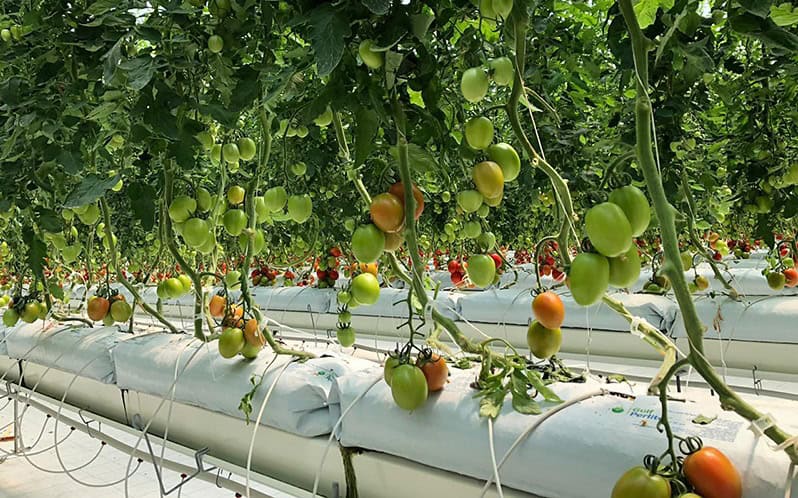
Water Availability and Conservation
As a moisture-holding medium, perlite is more effective than other growing media due to its superior capillarity. Nutrient-enriched water is drawn to the tiny irregularities on the surface of the particles and distributed evenly. While rockwool retains as much as 85% water by volume—too little air for optimum root development—perlite’s free-draining nature means that only the right amount of water for plant health is retained. Watering schedules can be adapted quickly and easily to meet changing needs and optimize for water conservation. Problems arising from the excess build-up of salts and disease due to over-watering are strictly controlled.
For further information, see info sheet: The Moisture Holding Capacity of Perlite
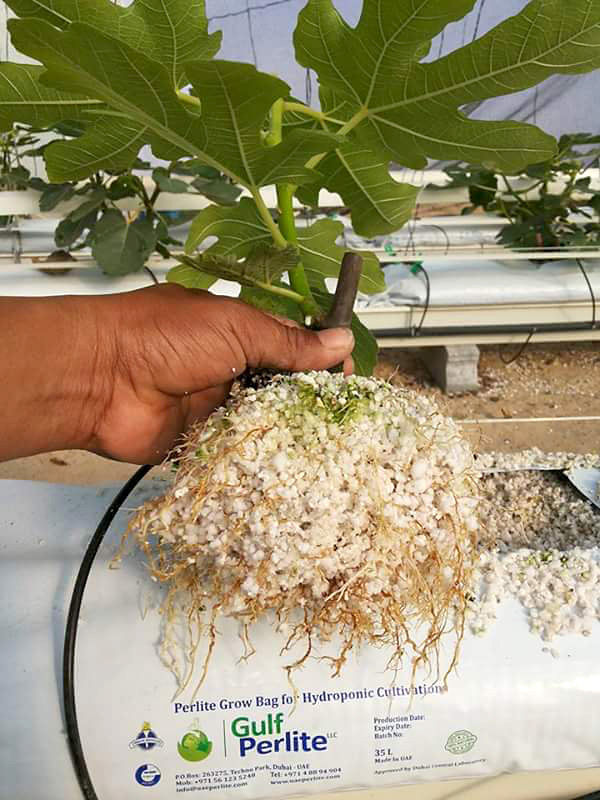
Crops grown in perlite grow-bags show extensive, healthy root development. Photo courtesy Gulf Perlite, LLC. 
Perlite grow-bags provide a sterile growing environment for this outdoor strawberry crop.Water is conserved by feeding nutrients via drip irrigation system. Photo courtesy Schundler Co.
ADVANTAGES OF PERLITE FOR HYDROPONICS:
- Inert, sterile, weed and pathogen free
- Lightweight, easy to transport and handle
- Adaptable to a variety of container shapes and sizes
- Has superior air and moisture availability
- Commercially inexpensive and available worldwide
- Adaptable to multiple crops and growing conditions
- Available in various grades and particle sizes
- Avoids excess moisture and build-up of salts
Versatility
Perlite is adaptable to a variety of hydroponic growing systems and can be scaled up easily to meet the needs of increased production. Perlite is used to grow small-leafed crops such as micro-greens in conjunction with Nutrient
Film Technique (NFT). For larger crops, perlite is ideal for use with modular systems such as “Dutch” or “Bato” buckets, and perlite-filled “Grow-bags”.
Another technique developed in the Netherlands involves ground-based channels filled with perlite and a series of irrigation, heating/cooling, and drainage tubes for propagating bulbs (see below diagram). This system is easy to install and maintain while being both cost-effective and helping to significantly increase production capacity in a short amount of time.
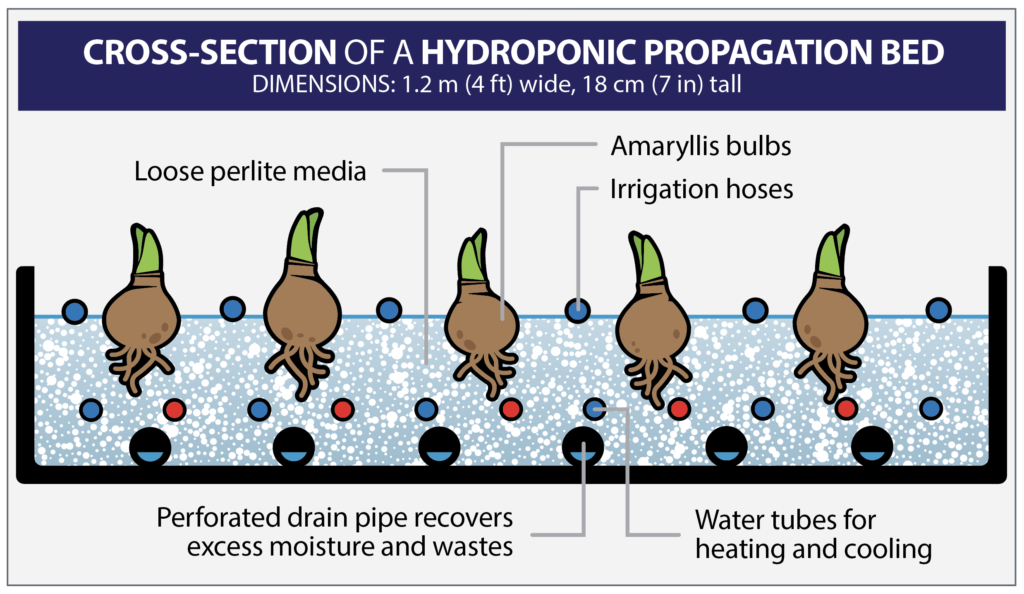
Long-term Stability and Reusability
Perlite retains its excellent air/water balance over multiple crop cycles if handled carefully and under the right growing conditions. Some growers report reusing the same perlite for several years in a row. Afterwards, it can be repurposed for use in potting mixes or as a soil amendment. If perlite is reused, sterilization may be necessary.
For more information on these and other hydroponic applications for perlite, contact your local perlite manufacturer.
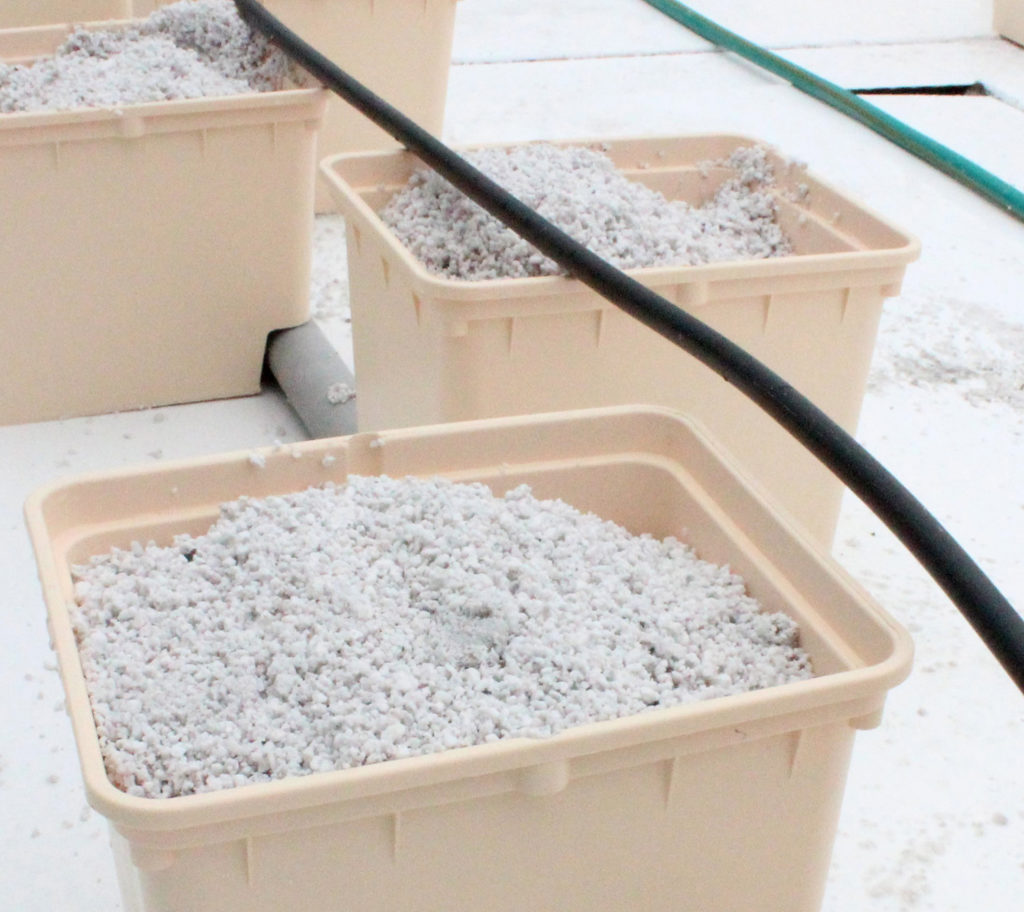
Perlite in use in a ‘Bato’ bucket hydroponic system. 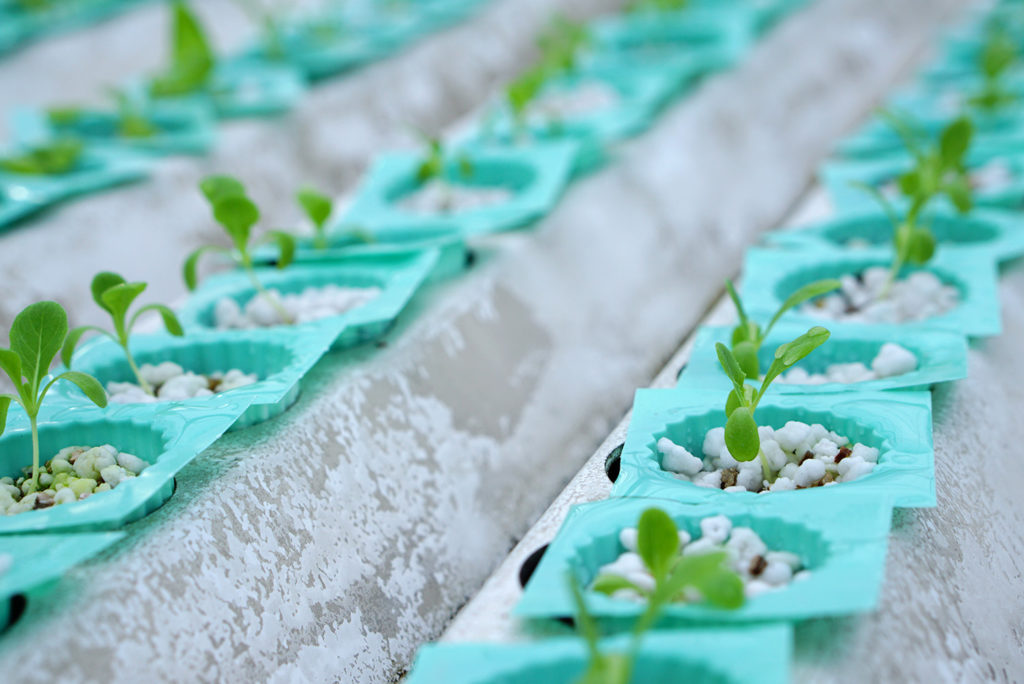
Perlite used with Nutrient Film Technique (NFT) to grow micro-greens for food production. 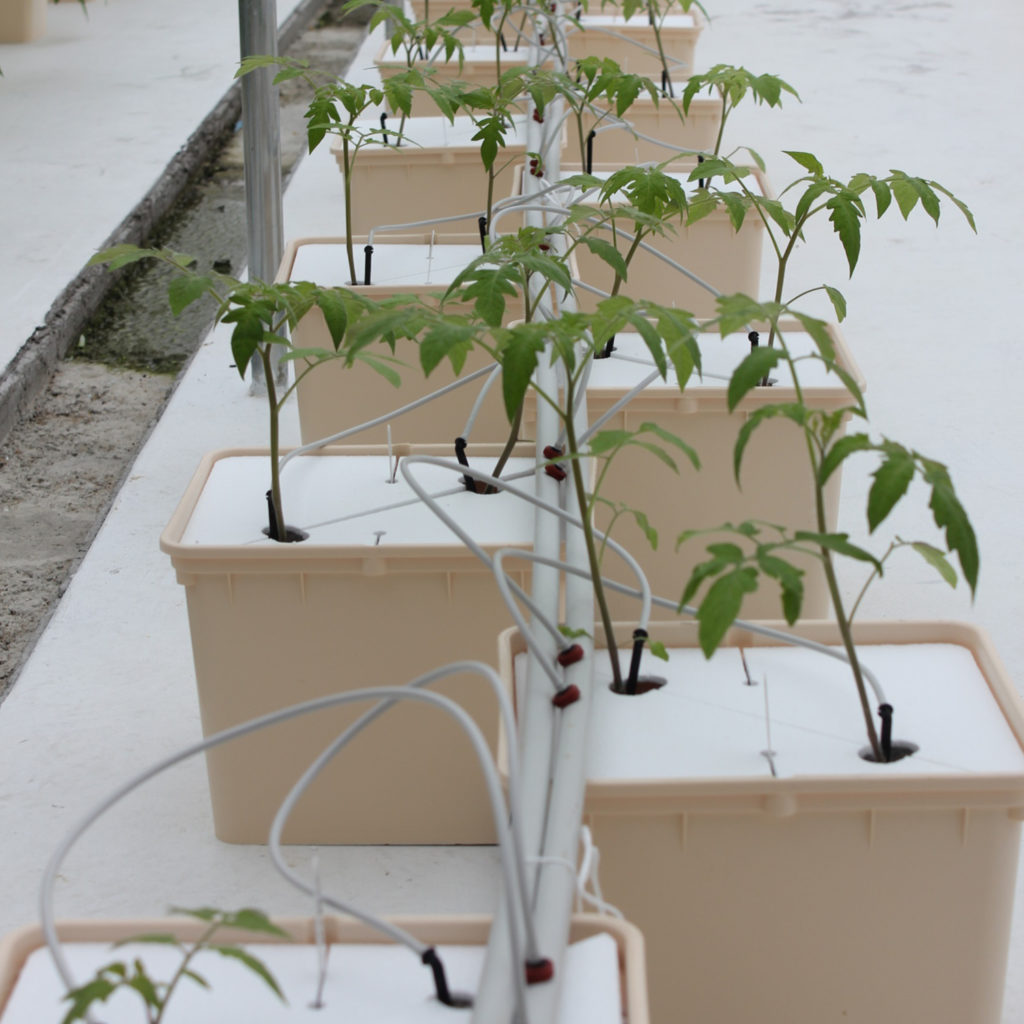
Perlite in use in a ‘Bato’
bucket hydroponic system.
Adapted in part from “The Role of Perlite in Hydroponic Culture” by Dr. David A. Hall, Principal, Pershore College of Horticulture, United Kingdom
To download a .pdf of The Role of Perlite in Hydroponic Culture brochure, click here.
If you have technical questions on this topic, please email the technical contacts listed on our contact page.
Copyright © 2019 Perlite Institute All Rights Reserved
